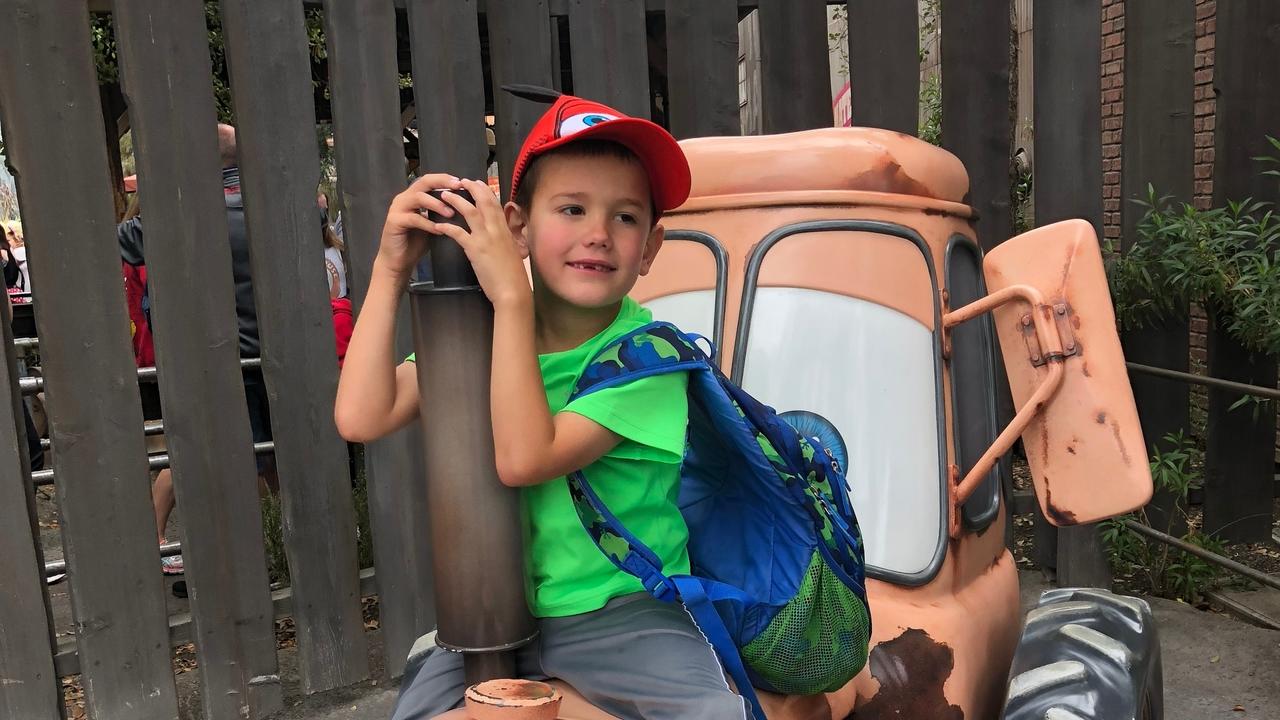Disneyland is autism friendly
Apr 08, 2019
Last year, on Tosh’s 7th birthday, I took him to Disney’s California Adventure. Although he does relatively well in highly stimulating environments like Chuck E. Cheese’s, and he’s been to smaller theme parks like Legoland, Disney takes things up a notch. I shouldn’t have worried. Disneyland parks are very accommodating to special needs children and it made all the difference.
Both Disneyland and California Adventure will flag your child’s ticket with a disability pass if you visit the information office located near the entrance of each park. Visit the park website for the exact location, or just ask any friendly, helpful employee at the entrance.
A disability pass gives you unlimited free Fast Passes, which minimizes wait times for rides. You can even get Fast Passes for rides after they’ve sold out, which was a blessing for us because the park was packed for Spring Break, and most rides were sold out within a couple of hours of our arrival.
These are regular Fast Passes, which require you to sometimes wait a few hours or more before you can ride. However, one at a time, you can get a disability Fast Pass which usually only has a one to two hour wait. And, if you don’t make it to the ride during the scheduled window, it doesn’t expire. Perfect for if your child needs to chill out in your hotel room or one of the park’s quiet spaces.
The parks have information kiosks that can scan your child’s ticket and issue new disability Fast Passes, so you don’t have to go all the way back to the entrance once you’ve used it. So convenient!
When visiting the information office or kiosks, ask the guides to give you a map and mark where the quiet places are in the park. There are several areas on the back end of rides or along less traveled paths that have benches where your child can mellow out if they become over stimulated.
One of these areas was actually Tosh’s favorite part of the park, because he could sit and watch riders on one of the water attractions slide down the ramp, make a huge splash in the water, and soak people watching on a bridge above. Watching the boats slide down the ramp was visually stimulating, similar to how he enjoys sitting at the bottom or top of playground slides and watching kids more than he enjoys sliding himself. And we had that area pretty much to ourselves, even during Spring Break.
Another important tip to help you enjoy your Disney visit has nothing to do with accommodation: Look around. Don’t be so nervous your child will disturb others that you don’t notice the park is filled with autistic children and their families, as well as people who are very accepting.
For example, we rode the Radiator Springs Racers ride four times, because it was Tosh’s favorite. He was so excited each time we got into line, he was very noisy and made all the typical autism shrieks and grunts that often draw stares in a crowd. Had I been too embarrassed to look around, I wouldn’t have noticed that two out of those four times in line, the family ahead of us also had an overly excited, severely autistic child they were desperately trying to keep quiet.
In another line, a couple in front of us kept sneaking side eye looks at Tosh as he shrieked with joy watching people on the ride. Instead of getting angry at them for being gawkers, I smiled at them the next time they looked at him. The husband asked Tosh, “are you having fun?” I replied, “Yes, but he’s nonverbal. I’m sorry, I hope he hasn’t been bothering you.”
“Absolutely not,” he said. “I’m a special ed teacher who works with severely autistic kids. I spotted him right away. He’s doing so well in line, I’m really impressed!”
We kept talking, and it turns out this guy left his San Jose tech job to teach special ed because he volunteered one year to coach a soccer team with autistic kids and found it so rewarding, he decided to switch careers. What’s more, he kept his tech contacts and is working with Stanford researchers to develop wearable communication devices. Think an Apple Watch with a large face that has an advanced Proloquo2Go interface combined with biofeedback that can help identify when the wearer is stressed from overstimulation or about to have a seizure. Amazing stuff and apparently, just a few years from hitting the market!
As always, remember that even though there are rude, ignorant assholes who judge your parenting or make disparaging comments about your child, for the most part, you are far more concerned about your child’s behavior than are other people. So relax and enjoy your fun day! I know we sure did.
Pro Tip: dress your child in the brightest colors you can find. Tosh loved a gigantic playground located in the park, but quickly got away from me after climbing some rope ladders. Thankfully, I was always able to keep an eye on him or quickly locate him if he darted out of sight. His neon green shirt would also make it easy for park staff to identify him.
Nonverbal Autism Homeschool enrollment is currently open!
Stay connected with news and updates!
Join our mailing list to stay updated on Nonverbal Autism Homeschool courses, special events and new blog posts. You'll also receive free curriculum, inspirational messages, autism parenting hacks and more!
We hate SPAM. We will never sell your information, for any reason.

